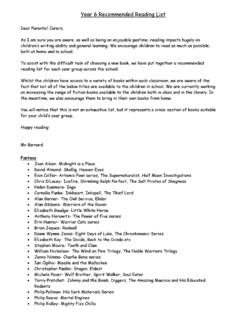Transcription of Top 10 Workplace Dysfunctions—And How to …
1 Top 10 Workplace Dysfunctions And how to TERMINATE Them By Roxanne Emmerich Remember the last time you walked into a business and felt an arctic chill a sense that the employees were silently wishing each other, and you, some untreatable, terminal rash? It's the dysfunctional Workplace , and it's a killer. Untreated, the dysfunction will kill off your customer base, your profits, and your joy for living as surely as anything. So you've got to kill it first. Why you have NO choice but to tackle dysfunction Awareness of a dysfunctional Workplace most often starts at the very grass roots of the company. By the time most CEOs are aware of it, the dysfunction is sure to be deeply rooted and oh-so-very well-known by everyone, and I mean EVERYONE else. A dysfunctional environment wastes incredible amounts of time and energy. Managers know how much time is spent dealing with dysfunctional employees. And functional employees know how much energy is drained by those who are busy driving everyone else stark raving mad.
2 In addition to time and energy, dysfunction costs you money by undercutting efficiency and productivity, driving customers away, and increasing sick days and general work avoidance. Gallup estimates that a typical organization has $3,400 of lost productivity for every $10,000 of payroll due to disengaged employees one of the primary symptoms of dysfunction. And if all of the above isn't enough, think about the emotional hell of it. Nothing takes the joy out of living like a job you hate, and nothing makes a job more hate-worthy than a deeply dysfunctional Workplace . The Top Ten Dysfunctions and the cure for each To kill a vampire, try garlic or a stake through the heart. To kill Superman (Kill Superman? What kind of evil genius are you?), Kryptonite is your weapon of choice. Likewise, each Workplace dysfunction has its own silver bullet one best way to slay it in its tracks. No. 1: People being at odds with each other with no desire to fix it. MMIV Leadership Press Avenue, LLC.
3 All rights reserved, including translation. No reproduction or duplication, whole or in part, in any form or by any means without written permission from Leadership Press Avenue, LLC. Material provided under license, for internal use only pursuant to the terms and conditions of the license agreement. 1. Being at odds with someone isn't necessarily a dysfunction. We all encounter people with whom we just don't fit. It becomes dysfunctional when the friction begins to affect Workplace performance and/or creates a toxic atmosphere AND. the people involved seem hell bent on keeping the friction alive and well. Have the most direct supervisor shared by both employees meet with each individually (1) to determine if each acknowledges the situation, (2) to learn what it will take to resolve it, and (3) to secure a firm commitment to do so. Finally, bring them together for a quick meeting to affirm the idea that the health of the organization trumps whatever is creating the problem between them, and that their commitment to that idea will be one of the main issues in their next evaluation.
4 Tends to get their attention. No. 2: Saying one thing and meaning another. Clear communication is one of the non-negotiables of a healthy, functional Workplace . If you have an employee with a pattern of saying, "But what I meant was " in order to slip sideways out of consequences, call them on it. Make it clear that intentions are meaningless if the communication was so unclear that it could be so easily "misunderstood." Requiring the offender to have all communications checked for clarity by a supervisor for a period of time usually nips this in the bud. No. 3: Giving lip service to new ideas, then undercutting them in private. That sound you just heard was my toes curling. Remember Eddie Haskell from "Leave It To Beaver?" He was the neighbor kid who always sweet-talked the parents to their faces, then led the mayhem when their backs were turned. This dysfunction is so harmful because it speaks of such deep dishonesty. You might think the best way to address it is by pulling the offender aside, but it's not.
5 You want to make a more general announcement to establish a culture-wide understanding of this dysfunction and to enlist the help of everyone in keeping it out. Make it clear that dissenting opinions are welcomed during decision making, but that once a decision is made, undercutting will not be tolerated. Ask your entire staff to cut off under-cutters by asking, "Why didn't you bring this up during the decision process?". No. 4: Defensiveness at reasonable suggestions. Let your people know that you consider a willingness no, an EAGERNESS to improve to be one of the hallmarks of a person with a bright future in the company. Defensiveness should be viewed as what it is an unwillingness to improve one's self. MMIV Leadership Press Avenue, LLC. All rights reserved, including translation. No reproduction or duplication, whole or in part, in any form or by any means without written permission from Leadership Press Avenue, LLC. Material provided under license, for internal use only pursuant to the terms and conditions of the license agreement.
6 2. No. 5: Attraction to chaos. Some people just like drama. There's nothing much to be done if they quietly enjoy it from the wings, but any active stirring of the pot must be dealt with directly and forcefully. It's a violation of principles both written and unwritten and a threat to productivity. Counterbalance the pleasure they get from drama with a greater measure of negative consequences. No. 6: Not following through on commitments. Again, my toes are curling. And again, the key is establishing a culture-wide value. Let people know they are expected to follow through on commitments, and when they don't, to acknowledge the error and make a commitment to clean up every last bit of the resulting mess. No. 7: Deflecting blame. At this point, my toes are just getting naturally curly. Deflecting blame equals deflecting responsibility. Someone who systematically deflects blame to others is often lacking in confidence and therefore unwilling to risk absorbing the blame herself.
7 Make it clear that mistakes are an expected part of all human work and that the only acceptable behavior is acceptance of responsibility, commitment to avoid a repeat, and quick work to clean up the mess. Let it be known that accepting responsibility is respected and rewarded, while deflection is frowned upon. No. 8: People pretending like they "never got the memo.". Make a quick review of communication procedures to see if the claim holds up. If the system was broken, fix it. If not, make it clear that the employee is responsible for consistently accessing internal communications memos, email, and so on so that he is never again "out of the loop.". No. 9: Refusing to deal with conflict directly. This is the passive-aggressive version of the addiction to chaos. Refusal to deal with conflict becomes dysfunctional when (1) the conflict affects productivity or the Workplace environment, or (2) when it is your JOB to deal with it. I'm talking to all those managers who know very well that two of their direct reports are busy throwing daggers at each other but who can't be bothered to tackle it head-on.
8 Make it clear that conflict resolution is an essential part of a manager's job and that performance reviews can and should count disruptive interpersonal conflicts against managers on whose watch they occur. No. 10. Gossiping and backstabbing. I saved the very worst for last. If a happy and functional Workplace is your goal, there is no better place to put your energy than the absolute and total elimination of gossip. A Workplace full of whispered gossip is excruciating. It is destructive MMIV Leadership Press Avenue, LLC. All rights reserved, including translation. No reproduction or duplication, whole or in part, in any form or by any means without written permission from Leadership Press Avenue, LLC. Material provided under license, for internal use only pursuant to the terms and conditions of the license agreement. 3. to the soul of your Workplace and the souls of your people. They never feel safe, always wondering who is talking behind their backs. Once you establish a zero-tolerance policy for talking behind another person's back, give your people permission to address conflict head-on, out loud, courageously and honestly.
9 And make it clear that giving or receiving gossip is not acceptable. The golden key: clear communication You may have noticed a refrain coming back again and again in this advice: Make it clear. Once you've made the determination to purge your Workplace of dysfunctional behavior, your greatest ally and most powerful tool will be clarity. Don't imply, don't suggest, don't "encourage" the demise of dysfunction. Either this matters or it doesn't. Once you've decided it matters, move deliberately and unambiguously. Make the policies and vision clear, then call it tight on dysfunctions that get in the way of following those policies and achieving that vision. SIDEBAR. Three Cs of Curing Dysfunctional Behavior Clarity. Make behavioral expectations impossible to misunderstand. Integrate them throughout your organization, in the employee handbook, in the performance review standards, on posters in the break room. Consistency. The more you pick and choose which dysfunctional behaviors you will tolerate and which you won't, the more people will test your boundaries.
10 Call it tight by adopting a zero-tolerance policy for dysfunctional behaviors. Consequences. Appealing to the better angels of human nature is a fine start. When that fails and on occasion, it will have firm and systematic consequences in place. Roxanne Emmerich is renowned for her ability to transform ho-hum workplaces into massive results- oriented bring-it-on environments. To discover how you can ignite the passion of your employees, catapult performance to new levels, and boost the morale of your company subscribe to the Thank God It's Monday e-zine at . MMIV Leadership Press Avenue, LLC. All rights reserved, including translation. No reproduction or duplication, whole or in part, in any form or by any means without written permission from Leadership Press Avenue, LLC. Material provided under license, for internal use only pursuant to the terms and conditions of the license agreement. 4.


